Shortboard
Why You Shouldn't Shortboard
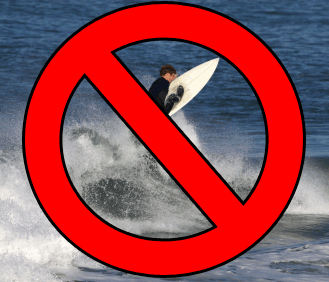 Shortboarders have no souls. They have lost touch with the ocean, with the waves and with the mystery of surfing. They are more concerned with busting airs and landing tricks than they are with enjoying the surfing experience. Don't get a shortboard.
Shortboarders have no souls. They have lost touch with the ocean, with the waves and with the mystery of surfing. They are more concerned with busting airs and landing tricks than they are with enjoying the surfing experience. Don't get a shortboard.
I hope you detect the sarcasm in that last paragraph. The point of this article isn't to convince you that shortboarding is evil, but to help point out that not every surfboard is a good fit for every surfer. This is the first article in a series where we will look at the pros and cons of the various types of surfboards in hopes of helping you pick a board that is a good fit for you and the waves you have access to.
This article was written by a shortboarder of 10+ years. We had them take a serious look at shortboarding and identify what the most frustrating and difficult parts were. We hope you can learn from their experience and benefit from the debate. Keep in mind though, they are still shortboading to this day, so don't forget to read the pro shortboard article as well.
Before we go any further, we'll need to define what a shortboard is. (Feel free to skip ahead to point #1 if you already read the pros article.)
Length isn't everything when it comes to board definitions. A 5' fish is no more a shortboard than a 10' gun is a longboard. The term shortboard is currently used to refer to the modern high performance surfboard. They typically have 3 fins though quads are popular right now and twin fins or super twins are not unheard of.
One of the main distinctions that makes a board a high performance shortboard has to do with how the board generates its power. Shortboards do so by being put on rail. They are thin, have a good amount of rocker and will slow down when heading straight, so to make them work, you have to pump them from rail to rail, putting pressure on the board's flex pattern and fins. You then release that pressure by straightening out into your next maneuver.
All of the pros on tour and most of the pictures you see in surf magazines are surfers riding shortboards. Despite that, a shortboard might not be the best option for you. Though they offer many benefits, they also have a few downfalls. So what are the fallbacks associated with shortboarding? Here are some reasons to keep in mind when making a surfboard buying decision.
Why You Shouldn't Shortbaord
1. It Is 2ft & Rolling: Sometimes the waves you have access to are small, slow and long. If, most of your sessions happen at San O, Waikiki or at a small point break in Western Oz where the waves don't pack a punch, a shortboard might not be the best bet for you. The fact is, small waves like big boards. The extra flotation and paddle power that come with a big board make it easier to catch them, the extra weight helps you to carry your momentum as you glide and the lower rocker lets you plane even when going in a straight line. For small waves, shortboards aren't your best option, something thicker, wider and longer will work much better and there are a number of board options which provide that.
Of course, you will see people out on shortboards when its small. They will struggle to catch waves, once they're up they'll have to pump around furiously and rock back and forth to stay on the wave and they will most likely end up frustrated. Wouldn't you rather make the best use of the waves and have a good session on a slightly different board?
2. You Are Getting Old: There comes a time in every surfers life when the limitations of age force them to think about new board options. As you age, your metabolism slows down, you stay sore for days after a good surf and your range of motion decreases and you become more prone to injury. None of these things is a plus for high performance shortboarding.
Shortboards are maneuverable, but they require maneuverability from you. There is a lot of bending, squatting, leaning and explosive movements. As you get older this won't be as easy for you anymore. You will have to leave the shortboards, airs and hot surfing to the groms. Once you reach the age of 30 (varies for each surfer), it is a good idea to add a few inches to the length of your board every 5 years or so. That doesn't mean you can't still ride a maneuverable board, but a hybrid might be a better option.
Of course, some guys keep in shape and age well. In 2009 we saw Curren & Occy ripping J-Bay like it was 20 years ago. If you have kept in good shape, maintain muscle range through stretching or yoga and haven't put on too much weight, by all means keep your shortboard. Just keep in mind its not a bad thing to move up to a slightly bigger board, it just makes you distinguished.
3. Less Riding Time: Time on wave. That is what its all about. After loading everything into the car, scouring for parking, climbing into a damp wetsuit, paddling through a barrage of waves, waiting for sets, fighting for the peak and finally getting a wave... that wave better be good.
To go surfing, you have to make time by sacrificing from something else you could be doing. A surf session that lasts 2 hours could take up 4 hours of your day from door to door. In 2 hours a beginner to intermediate surfer might get 6-10 waves. At 5-10 seconds a pop you're looking at a minute of total surfing time for the 4 hours you could have been sleeping in or watching the game. You have to ask yourself if it was worth it.
Bigger boards catch waves easier, the rides are longer and it is even possible to share a wave as more of the face becomes rideable. Watch old footage of Malibu, they used to stack guys on those waves and everyone was having fun. On a bigger board with more paddle power and float, you'll end up making the same sacrifices to find surfing time, but you might spend 5-10 times a long actually surfing.
4. Shortboarders Can Get Aggressive: The word that we use is aggro. Shortboarders tend to fight over waves. They paddle battle, drop in and sometimes end up taking it to the beach. Its well known that surfing has a history spotted with localism, aggression and fights, but this tends to be isolated incidents at a few highly competitive spots. These also tend to be the spots that shortboarders like to surf. Not every spot is bad and not every surfer is like that, but it is common to see shortboarders dropping in on each other and paying less attention to the other surfers around them.
The source of this problem has to do with a few things. Shortboarding tends to be more high adrenaline and so it attracts a different crowd but most of the aggression in the water has to do with limited take off spots. Though the ocean is big, shortboarding spots have specific take off zones which can get pretty small. When you have a lot of people competing for a limited resource, it is only natural for tensions to rise. If you keep this in mind, you can keep a cool head, but some people just prefer to avoid it.
If you look at surfing as a time to relax and unwind, it tends to be easier to do so at a spot with less people and a more relaxed environment. The spots that open themselves up to these types of environments more often tend to have smaller waves and a larger take off area. Depending on what you're looking for, a relaxing day at a nice longboarding spot may be more your style, in which case the experience you desire might partially dictate the board you should ride.
5. Shortboards Ding/Break Easier: There is nothing you can do about it, a good high performance shortboard is light and it gets that way by using less material. The board has less foam and less glass used in the construction process. By using less resin, the board is lighter but at the same time it will ding more easily and can snap as well.
A board with a slighly thicker glass job will be more resistant to pressure dings, gashes and possible breaks, but this board will also be heavier. You might see a few options in your local surf shop, some which are so thin and light you can feel the glass job flex under a tight squeeze from your thumb and others which just feel a bit heftier. If you aren't yet going vertical, getting air or surfing in a way which necessitates the thinner board, it is not worth it to sacrifice that strength for a benefit you will not use.
Shortboarders can go through 2-3 boards per year and a pro might go through a dozen boards a month. For a surfer just getting into the sport, who might be a bit clumsier with the board on land and in water, a good way to protect against dings is by getting a sturdier, thicker board. You can always drop down once you are more comfortable.
Conclusion: When getting a surfboard you want to make sure the board will be a good match for what you're looking for. Not everyone is a good fit for a shortboard. If after reading through these points you think you might do better on a different style of board, don't be afraid to get it just because you don't think it seems as cool. There are tons of board models that can be fun to ride from slightly thicker and wider hybrids to the full longboard. Surfing is all about having fun in the water and being honest about the board that will work best for you is a good way to make sure you have the most fun.
Read our article on the pros of shortboarding: Why You Should Shortboard
Are there any other reasons to not get a shortboard? Leave a comment below and let us know.


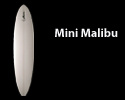
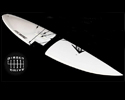


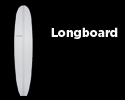
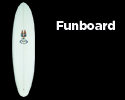


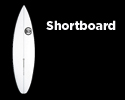


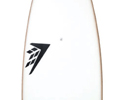
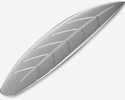
10 Comments